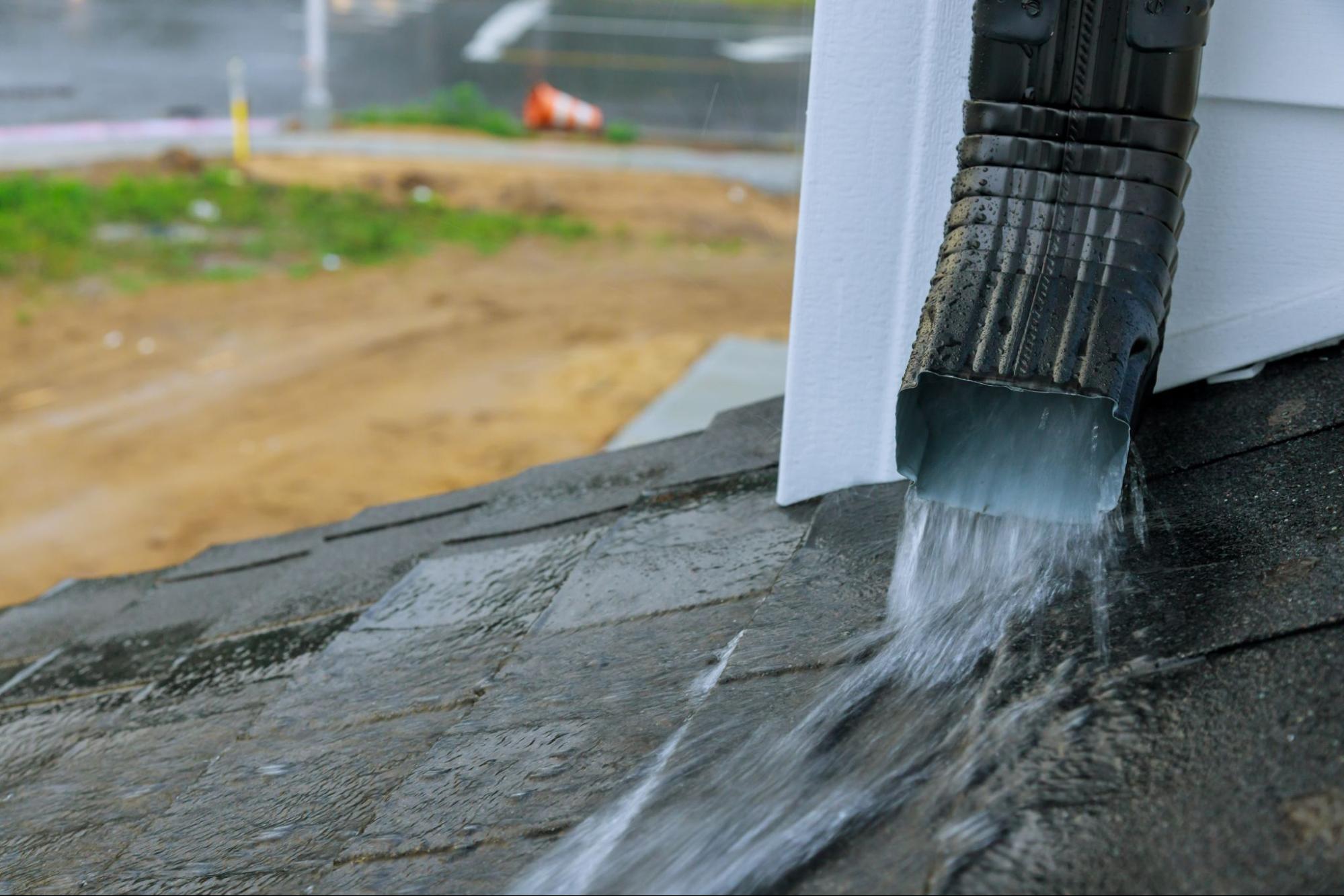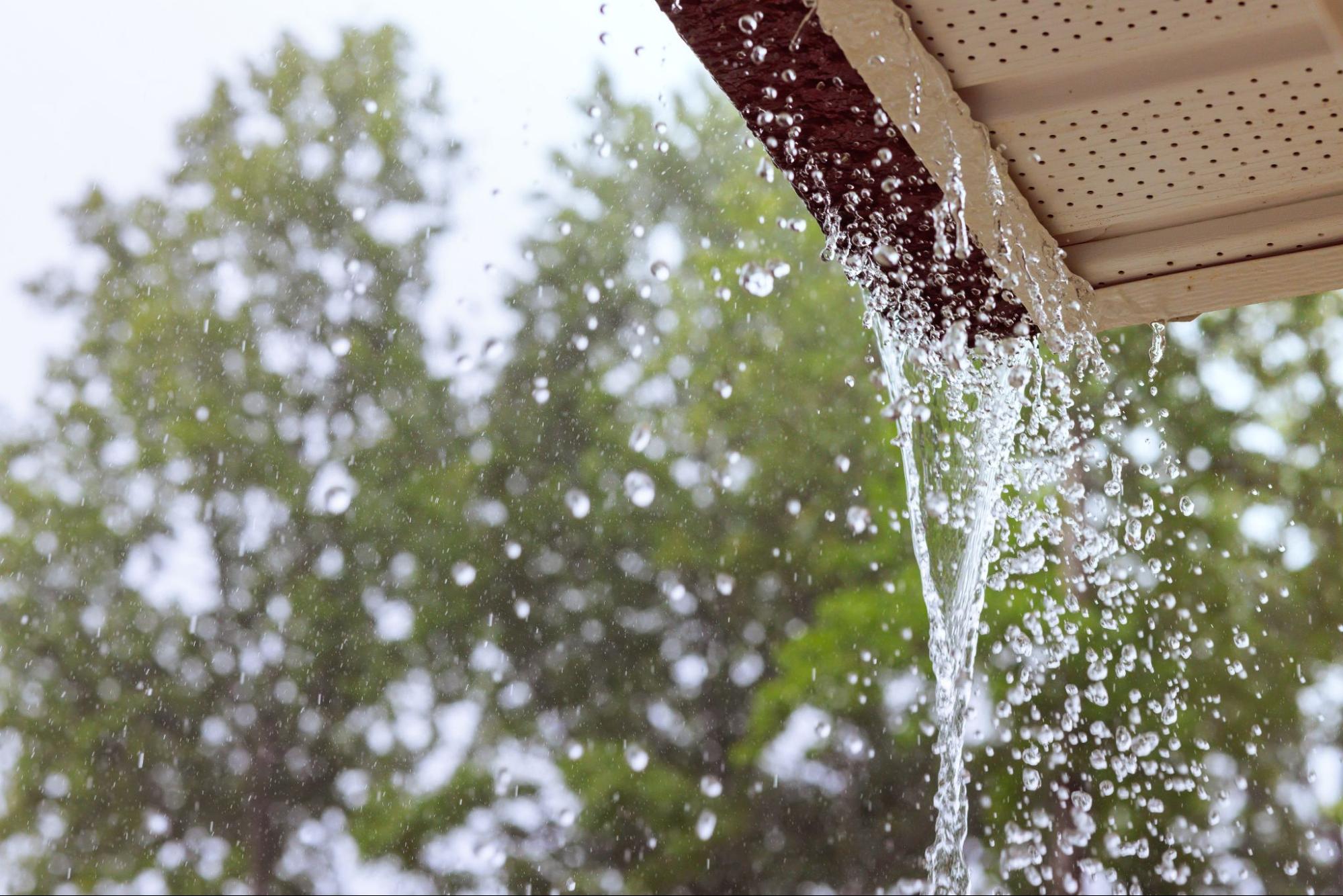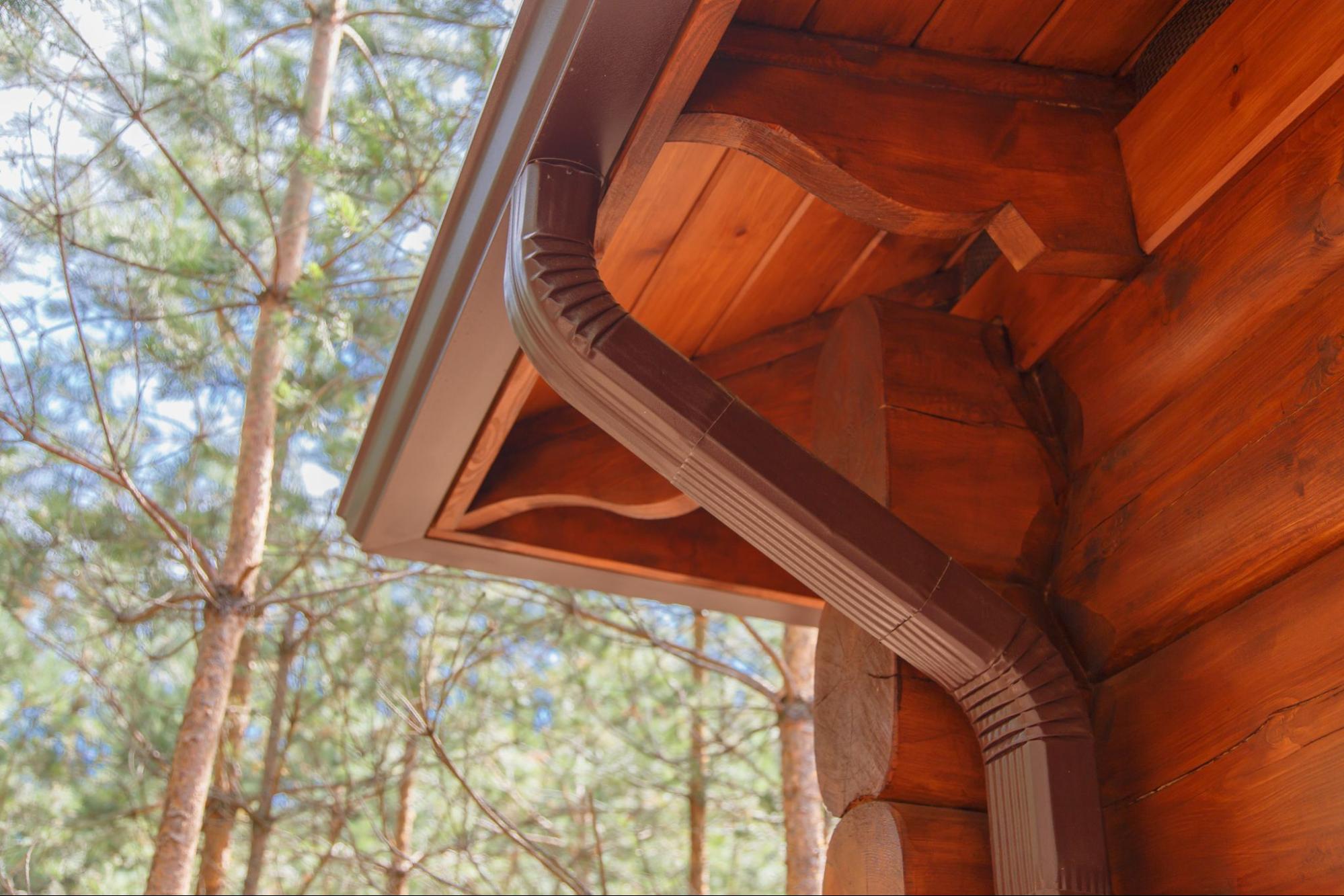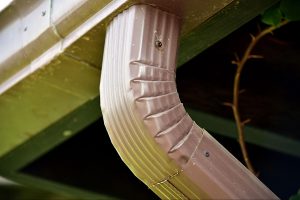Water damage rarely starts with a flood. It often creeps in from places you don’t expect, like a clogged gutter or a loose downspout. These systems aren’t flashy, but they are your home’s first defense against roof leaks, siding stains, and foundation cracks. Too many homeowners forget about them until something goes wrong. Staying on top of seasonal upkeep keeps everything flowing and spares you the mess.
Why Gutter and Downspout Maintenance is Essential
Gutters and downspouts aren’t just about keeping water off your roof. They’re part of your home’s drainage system, guiding rain safely away from the structure. When they’re clogged, cracked, or sagging, water starts to find its path; that’s where problems begin. Regular maintenance helps prevent gradual wear from turning into expensive repairs.
Protects Your Foundation From Erosion and Cracking
Water pooling near your home’s base weakens the soil and adds pressure to the foundation. Over time, this can cause cracks or even shifting. Downspouts should direct water at least three feet from the house to reduce this risk. If the gutters overflow, that runoff can soak into the soil where you don’t want it. Keeping everything clear and connected helps protect the structure from the ground up.
Prevents Roof Rot and Fascia Damage
When gutters clog, water doesn’t just pour over the edge; it seeps into nearby wood. The fascia boards behind your gutters absorb that moisture, leading to soft spots and decay. Eventually, it spreads to the roof edge and even the attic. Replacing rotted wood costs far more than cleaning a few gutters. Consistent maintenance keeps the water moving and the wood dry.
Helps Control Insects and Pests Around the Home
Stagnant water is a magnet for mosquitoes, ants, and gnats. Clogged gutters also make a perfect nesting spot for birds, rodents, and bees. The more buildup you allow, the more likely you’ll attract unwanted guests. Clean gutters dry out quickly and don’t give pests a place to hide. That means fewer infestations, less cleanup, and a more comfortable home.
Tips on Seasonal Gutter and Downspout Maintenance
Most homeowners don’t think about gutters until they overflow. But waiting until something breaks usually means repairs, not quick fixes. Routine upkeep does more than keep water flowing; it protects your home’s structure, siding, and safety. The reasons below show why seasonal care is worth every bit of attention.
Spring Upkeep for Gutters and Downspouts
As temperatures climb, snowmelt and spring rains test your entire drainage setup. Gutters fill fast with debris from trees, wind, and melting ice. Spring is the first stress test of the year, especially after months of freezing weather. Tackling problems as soon as possible prevents more hassle during summer storms.
Remove Ice Debris and Check for Warped Sections
Winter leaves a mess in your gutters. Melting snow carries sticks, grit, and roof debris into downspouts. If water froze inside, it could have cracked joints or bent brackets. Look for any sagging or loose hangers. Clear everything by hand or with a scoop, and rinse the system with a hose.
Watch for Mold and Algae Near Gutters
Spring warmth triggers mold and algae growth, especially on damp surfaces. Water may have spilled onto the siding if the gutters were clogged during the winter. Green streaks or black patches are signs that drainage isn’t working correctly. Use a soft brush and a safe cleaning solution to scrub those spots. Prevent regrowth by keeping gutters clean and dry.

Test Water Flow With Seasonal Showers
Once you clear visible debris, test your system with a garden hose. Start at the high end of the gutter and watch the flow. Water should move smoothly to the downspouts without overflowing. If it pools or backs up, there may be a low spot or partial clog. Make slope adjustments where needed.
Summer Maintenance to Extend Gutter Life
Warm, dry weather makes summer an ideal season for detailed inspection. The threat isn’t from snow or ice but from heat, UV rays, and wildlife activity. Pests often settle inside quiet corners, and sun damage can slowly break down material. Routine checks catch these issues before they escalate into expensive problems.
Trim Back Overhanging Branches
Trees growing too close to your roof will drop leaves, twigs, and seed pods into your gutters. These organic materials create blockages even in dry weather. Additionally, squirrels and birds use branches as pathways to build nests in downspouts. Trim trees so branches stay at least six feet away. That keeps debris and animal activity in check.
Seal Gutter Seams and Check Paint Coating
Sunlight, especially on metal gutters, breaks down paint and sealant. Cracked seams or flaking paint can expose metal to rust. Look closely at joints and corners. Use silicone or specialized gutter sealant to reinforce weak spots. Repainting metal surfaces also helps protect them from corrosion.
Check for Pest Nests or Insect Damage
Wasps and bees often build nests under eaves or inside covered gutters. Mice and small birds may also squeeze into downspouts. If you hear buzzing or chirping, take action before the infestation grows. Remove the nest carefully or hire a pest professional. Then install guards or screens to discourage return visits.
Clean Out Gutter Guards or Screens
If you’ve installed guards, summer dust and pollen can clog the system. Run water through and see if it flows freely. If it backs up, check for buildup under or around the guards. Clean them with a brush or spray nozzle. Rinse the inside of the gutter afterward to clear residual debris.
Gutter and Downspout Preparation Before Autumn
Autumn is when most gutters face their most formidable challenge. Leaves fall in thick layers, quickly filling every channel and downspout. If neglected, blockages can freeze later and cause ice expansion. Fall maintenance is all about preparation and early action before problems stack up.
Scoop Out Leaves Weekly
Gutters can clog in just a few days during peak fall, especially in heavily wooded areas. Use a glove or scoop to remove layers of wet leaves. Wear safety gear and work on dry days to reduce slipping. First, remove blockages near downspouts. Finish by flushing the system with water to check the flow.
Add or Upgrade Gutter Guards
Mesh screens or reverse-curve guards can make a massive difference in the fall. While no solution blocks 100% of leaves, quality guards drastically reduce buildup. Choose guards that fit your existing gutters and local tree types. Some styles handle pine needles better than others. Install them securely to prevent shifting or gaps.

Inspect for Misaligned Sections After Heavy Wind
Fall storms bring wind strong enough to loosen gutters from their brackets. Check for tilt, sag, or separation at joints. If the angle is wrong, water won’t drain correctly. Tighten or replace fasteners as needed. Use a level to verify the slope from end to end.
Gutter and Downspout Protection Steps for Winter
Freezing weather challenges even well-maintained gutters. Snow, ice, and sleet can clog downspouts, stress seams, and form heavy dams. Winter upkeep should focus on prevention and reaction after major storms. A little attention goes a long way in keeping water from backing up into your roof or foundation.
Clear Snow from Roof Edges Promptly
Heavy snow weighs down the roof and the gutter system. Use a roof rake to gently pull snow away from the edges. Never use metal tools, which can damage shingles or gutters. Aim to keep a three-foot area clear above the gutters. That helps prevent snowmelt from freezing and forming dams.
Use Heat Cables for Ice Buildup Prevention
Heat cables can melt snow and ice in critical areas. Install them in zig-zag patterns along eaves or inside the gutter. Turn them on before a heavy snowfall or cold snap. Keep the power source dry and inspect cords regularly. They reduce the risk of ice dams forming in cold climates.
Check Downspouts for Hidden Ice Plugs
Even when gutters look clear, ice can form inside vertical downspouts. Feel along the length of the pipe for cold, solid sections. If you suspect a plug, use warm, not boiling water, to melt it from the top. Alternatively, consider inserting calcium chloride socks to break up the ice. Never pour salt, which corrodes metal and harms plants.
Year-Round Gutter and Downspout Maintenance Habits
Consistency matters more than timing when it comes to gutter care. Seasonal cleanings work best when supported by regular checks throughout the year. These habits don’t require much effort but prevent larger issues from catching you off guard.
Walk the Perimeter After Storms
Every time a storm passes through, do a quick visual check. Look for areas where water overflowed or where gutters appear pulled away. Downspouts should release water at least three feet from your home. If not, extend them using simple attachments. These checks take five minutes and prevent damage from spreading.
Maintain Gutter Pitch and Support Brackets
Over time, gutters may shift slightly out of alignment. A slope that’s too flat or too steep causes overflow or stagnation. Re-secure loose brackets and check that the angle allows consistent flow. You may need to reposition fasteners along long runs. A properly pitched gutter rarely clogs or leaks.
Flush With Water Every Few Months
Even during dry seasons, dust and grime settle in gutters. Use a hose to rinse everything every couple of months. Start at one end and watch the water path. It should flow evenly without bubbling or pooling. It helps you catch and fix minor clogs before they become serious.
Keep Your Gutters and Downspouts Working Year-Round
Neglected gutters don’t just fail; they can cause problems that spread quickly and cost more than most expect. A few small tasks each season protect everything beneath your roof. Don’t wait for water to tell you something’s wrong. Stay ahead, stay dry, and give your home the attention it deserves.
Want clever ways to manage gutters and downspouts? Head to the Quality Rain Gutters, Inc. blog for clear, practical insights that work.





